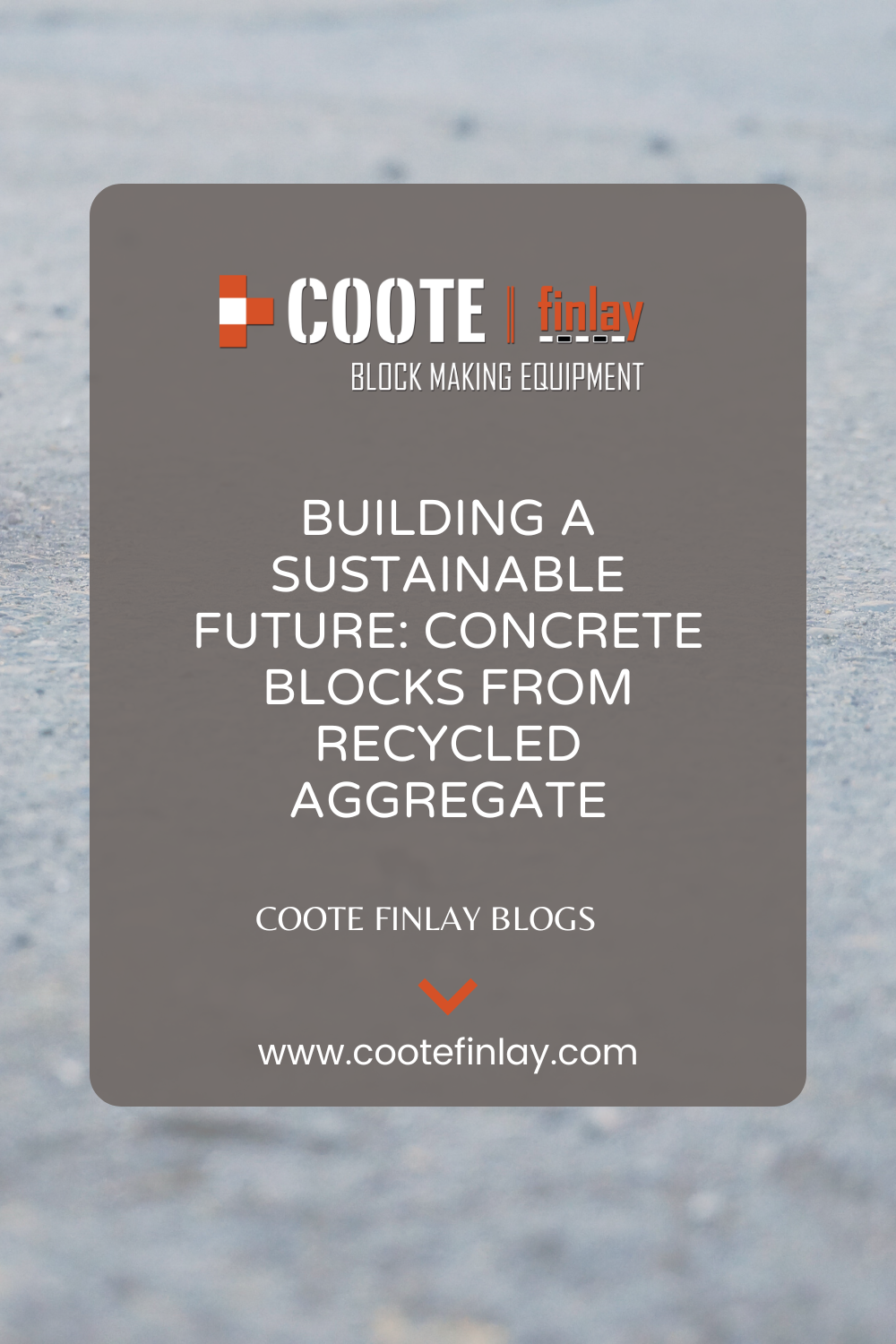Building a Sustainable Future: Concrete Blocks from Recycled Aggregate
Posted On: July 6, 2023
Introduction
In an era of increasing environmental awareness and the urgent need for sustainable practices, the construction industry is actively seeking innovative solutions to reduce its ecological footprint. One promising approach is the utilisation of recycled aggregates in the production of concrete blocks. By repurposing materials that would otherwise end up in landfills, we can create eco-friendly alternatives while maintaining the structural integrity and functionality of traditional concrete blocks. In this blog, we will explore the process and benefits of manufacturing concrete blocks using recycled aggregate, paving the way for a more sustainable future in construction.
Understanding Recycled Aggregate
Recycled aggregate refers to crushed concrete, brick, and other construction debris that has been processed and repurposed for use in new construction projects. By recycling these materials, we reduce the demand for virgin aggregates and ease the burden on natural resources. Recycled aggregate can be obtained from demolition sites or by processing waste concrete from construction sites, which is then crushed, screened, and graded to meet specific requirements.
Benefits of Using Recycled Aggregate in Concrete Blocks
1.1 Environmental Impact Reduction
The use of recycled aggregate in concrete block production significantly reduces the consumption of natural resources. It conserves energy, reduces carbon emissions, and minimises the strain on landfills. By diverting construction waste from disposal sites, we contribute to a more sustainable and circular economy.
1.2 Conservation of Natural Resources
Concrete blocks made from recycled aggregate help preserve precious natural resources such as gravel, sand, and stone. These resources are often extracted from quarries, causing habitat destruction and disrupting ecosystems. By substituting them with recycled materials, we protect natural habitats and reduce the environmental impact associated with aggregate extraction.
1.3 Energy Efficiency
The production of concrete blocks using recycled aggregate requires less energy compared to manufacturing blocks from virgin materials. Processing recycled aggregate consumes fewer resources and involves less transportation, resulting in lower energy consumption and reduced greenhouse gas emissions.
Manufacturing Process
The manufacturing process of concrete blocks utilising recycled aggregate is like that of conventional blocks. However, there are a few key considerations:
2.1 Material Preparation and Sorting
Recycled aggregate is carefully sorted to remove any contaminants such as wood, metal, or plastic. It is then crushed and screened to achieve the desired particle size distribution.
2.2 Proportioning and Mixing
Recycled aggregate is combined with cement, water, and other additives in appropriate proportions. The mixture is then thoroughly mixed to ensure uniform distribution of all components. Admixtures may be added to enhance the workability and strength of the blocks.
2.3 Moulding and Curing
The mixture is placed into moulds and compacted using hydraulic pressure or vibration. The blocks are then cured under controlled conditions to ensure proper hydration and strength development.
Performance and Applications
Concrete blocks made from recycled aggregate exhibit comparable strength and durability to traditional blocks. They can be used in various applications, including load-bearing walls, partitions, foundations, and paving. With proper quality control and adherence to standards, recycled aggregate concrete blocks offer a sustainable alternative without compromising structural integrity.
Embracing a Sustainable Construction Future
The adoption of concrete blocks made from recycled aggregate is a significant step toward a more sustainable construction industry. By integrating recycled materials into our building practices, we contribute to a circular economy, reduce waste generation, and conserve natural resources. It is essential for stakeholders, including builders, architects, and policymakers, to collaborate and promote the use of recycled aggregate in concrete block production to realise the full potential of sustainable construction practices.
Conclusion
Through careful material preparation, sorting, proportioning, and mixing, recycled aggregate can be effectively integrated into the manufacturing process of concrete blocks. The resulting blocks exhibit comparable strength and durability, making them suitable for various construction applications.
To drive widespread adoption, collaboration among builders, architects, manufacturers, and policymakers is crucial. Building codes and standards can be updated to promote the use of recycled materials, and incentives can be provided to encourage the implementation of sustainable practices.
As we strive for a sustainable future, incorporating recycled aggregate into concrete block production is a valuable step forward. By making conscious choices in construction materials, we can build a more environmentally friendly and resilient world while addressing the pressing challenges of resource depletion and climate change.


 +44 (0)28 8556 8123
+44 (0)28 8556 8123  info@cootefinlay.com
info@cootefinlay.com